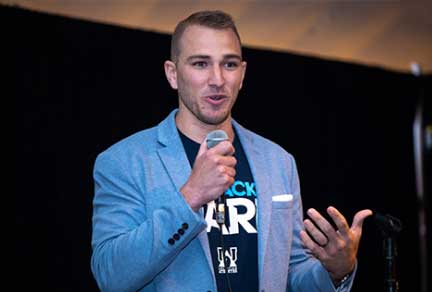Improving and accelerating clinical research in dementia by integrating the patient’s voice throughout the development journey
This article is part of a series about challenges and opportunities in developing treatments for Alzheimer’s and Dementia.
Populations globally are aging, with an attendant increase in the prevalence of neurological disorders – especially dementia. Opportunities are rich for drug developers whose treatments can help alleviate the debilitating effects of these disorders. The estimated growth in the number of people with dementia worldwide is projected to be 139 million by 2050.1 These diseases affect not just seniors; early-onset dementia can strike people in their 30s and 40s.2 While progress in developing treatments has been slow, recent approvals for treatments for Alzheimer’s disease are raising the profile. In 2022, there were 143 drugs in 172 clinical trials.3
| 10 Types of Dementia |
|---|
| Alzheimer's Disease |
| Vascular Dementia |
| Wernicke-Korsakoff Syndrome |
| Dementia with Lewy Bodies (DLB) |
| Normal Pressure Hydrocrephalus |
| Parkinson's Disease Dementia |
| Creutzfeldt-Jakob Disease |
| Mixed Dementia |
| Frontotemporal Dementia |
| Huntington's Disease |
However, developing treatments for dementia presents unusual challenges that call for a concerted effort to understand the patient experience and include the patient’s voice throughout the development lifecycle. This approach will be fundamental to successful clinical operations, regulatory approval, payer acceptance, and treatment adoption. In tandem, sponsors can begin building the asset’s value proposition from the outset, considering all the intrinsic interrelated elements to achieving the ultimate goal.
Unique challenges
Unlike most other disorders, there is a tendency to dismiss dementia symptoms as a normal part of aging, even among healthcare practitioners.4 This bias is exacerbated because healthcare providers typically lack access to diagnostic tools, and healthcare systems are unready to provide approved therapies. Alzheimer’s Disease International (ADI) estimates that 75% of people with dementia are not diagnosed, which equates to 41 million people globally.5
For drug developers embarking on novel treatments, running clinical trials presents another obstacle. Even patients with access to healthcare and who might be candidates for clinical research are often unaware of the option or skeptical about participating. Recruitment is typically protracted, with a screening failure of more than 80%; fewer than 50% of trial participants complete all study visits.6 Study failure rate Is high, with unclear benefits over an extended period. The science is still evolving, without certainty of meaningful outcomes and the proper target for potential treatments. Some practitioners advocate for a combination of therapies.
A patient-centric approach
Faced with these constraints, sponsors might understandably become discouraged. Yet we have seen they can make a dramatic difference by keeping the patient front and center in their development programs and involving patients in designing clinical trials. The key is to think holistically about the patients’ larger community, identify points of contact and influence, and engage with them as part of a long-term strategy. By building partnerships with healthcare providers, community alliance networks, caregivers, nursing homes, and patient advocacy groups, sponsors can more easily engage directly with patients and develop essential insights about their needs and perspectives. These insights can facilitate a study strategy that makes it easy for patients to join and remain in a trial. By harnessing the power of these networks, sponsors can increase awareness and improve outcomes along the drug development continuum and beyond.
Best practices for integrating the patient’s voice
At Parexel, we have deep experience in supporting our clients with these programs and work closely with our partners to offer insight and leadership. Key among these partners are patient advocacy groups. The following is a summary of our recommended best practices.
Patient insights: Scale the power of networks through long-term partnerships
- Explore learnings from patients, healthcare providers, key opinion leaders, the Parexel Patient Community, and data sources to shape the strategy.
- Identify trial access and awareness issues and the specific needs of patients from historically underrepresented groups.
- Engage early with patients via Parexel’s Patient Advisory Council and patient ambassadors.
Patient recruitment: Harness insights to enhance patient engagement and understanding
- Create global and local awareness campaigns about trials, focusing on diversity and early diagnosis.
- Develop clear, simple materials to support sites with identification and engagement, such as patient websites and animated consent support.
- Utilize patient user testing and co-create content to ensure accessible patient-facing study materials.
- Reduce screening failures by setting the right eligibility criteria and taking a hierarchical approach.
Patient and caregiver support: Actively involve and support patients and caregivers during the study to optimize the trial experience and success
- Offer concierge and reimbursement programs to reduce practical barriers to participation.
- Use digital health technologies to respond to patients’ needs, including virtual visits, wearables for evaluation and assessment, and courier transfer of medications when indicated. Implement fit-for-purpose electronic clinical outcome assessment (eCOA) tools paired with thorough training.
- Provide diversity, equity, and inclusion (DEI) training for sites to facilitate engagement with underrepresented communities.
- Provide lay-language summaries with patient advocates as co-authors.
Compassionate closure: Demonstrate patient appreciation by thanking them and sharing study results
- Formally thank participants for their valuable contributions.
- Recognize sites and staff that provide excellent patient care and engagement.
Clear benefits of patient engagement
In our experience at Parexel, this intense focus on the patient yields meaningful outcomes for everyone involved. The overall experience is vastly improved for the patient and caregivers and offers hope for treatment, possibly on the near horizon. Direct inclusion in these initiatives allows healthcare providers to offer value to their patients and learn more about the disease and potential treatment. For drug developers, trials run more smoothly and successfully thanks to higher enrollment levels, shorter recruitment times, and more time spent on treatment and less on costly late-stage trials.
Further, drugs developed through patient-centric trials are adopted more quickly by payers, with a 19-point difference in the chances of achieving market access.7 In short, when drug developers do everything right in keeping the patient front and center, they can improve trial recruitment, engage patients and caregivers across the study lifecycle, and ultimately drive brand loyalty.
The next article in this series will examine how to increase trial participation and population diversity in early-phase Alzheimer’s disease drug development.
About the author
Andreas has over 15 years of experience as a clinical neurologist with neuroimmunology and multiple sclerosis (MS) expertise and senior executive in big and mid-size pharma. He is the former head of the Neuroimmunology Unit at the University Hospital in Brussels, Belgium, and has tenure as principal investigator in global Phase II–IV clinical studies. Andreas co-founded ParadigMS, an organization dedicated to improving MS patient care. At Parexel, as Head of Neuroscience, he is responsible for working with the industry, HCPs, and patients to create effective development strategies, leading his team in all aspects of execution to ensure that assets are approved quickly and efficiently.
Read the next blog in the Neuroscience series
Learn more about Neuroscience at Parexel
References
1 WHO Global Status Report 2021.
2 Johns Hopkins Medicine, Early-Onset Alzheimer’s Disease, 2023.
4, 5, 6, 7 Ibid.



